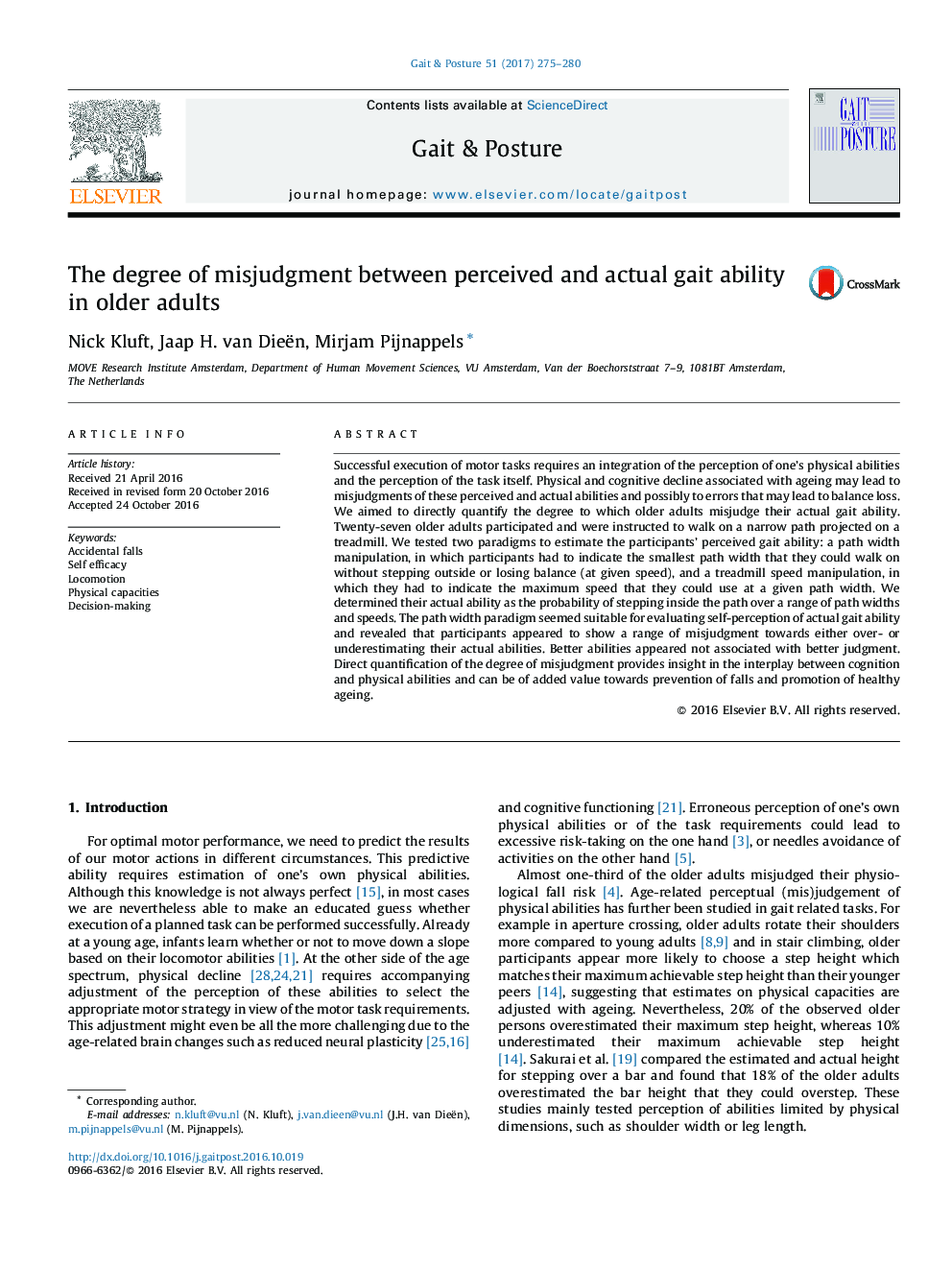| Article ID | Journal | Published Year | Pages | File Type |
|---|---|---|---|---|
| 8798728 | Gait & Posture | 2017 | 6 Pages |
Abstract
Successful execution of motor tasks requires an integration of the perception of one's physical abilities and the perception of the task itself. Physical and cognitive decline associated with ageing may lead to misjudgments of these perceived and actual abilities and possibly to errors that may lead to balance loss. We aimed to directly quantify the degree to which older adults misjudge their actual gait ability. Twenty-seven older adults participated and were instructed to walk on a narrow path projected on a treadmill. We tested two paradigms to estimate the participants' perceived gait ability: a path width manipulation, in which participants had to indicate the smallest path width that they could walk on without stepping outside or losing balance (at given speed), and a treadmill speed manipulation, in which they had to indicate the maximum speed that they could use at a given path width. We determined their actual ability as the probability of stepping inside the path over a range of path widths and speeds. The path width paradigm seemed suitable for evaluating self-perception of actual gait ability and revealed that participants appeared to show a range of misjudgment towards either over- or underestimating their actual abilities. Better abilities appeared not associated with better judgment. Direct quantification of the degree of misjudgment provides insight in the interplay between cognition and physical abilities and can be of added value towards prevention of falls and promotion of healthy ageing.
Related Topics
Health Sciences
Medicine and Dentistry
Orthopedics, Sports Medicine and Rehabilitation
Authors
Nick Kluft, Jaap H. van Dieën, Mirjam Pijnappels,
